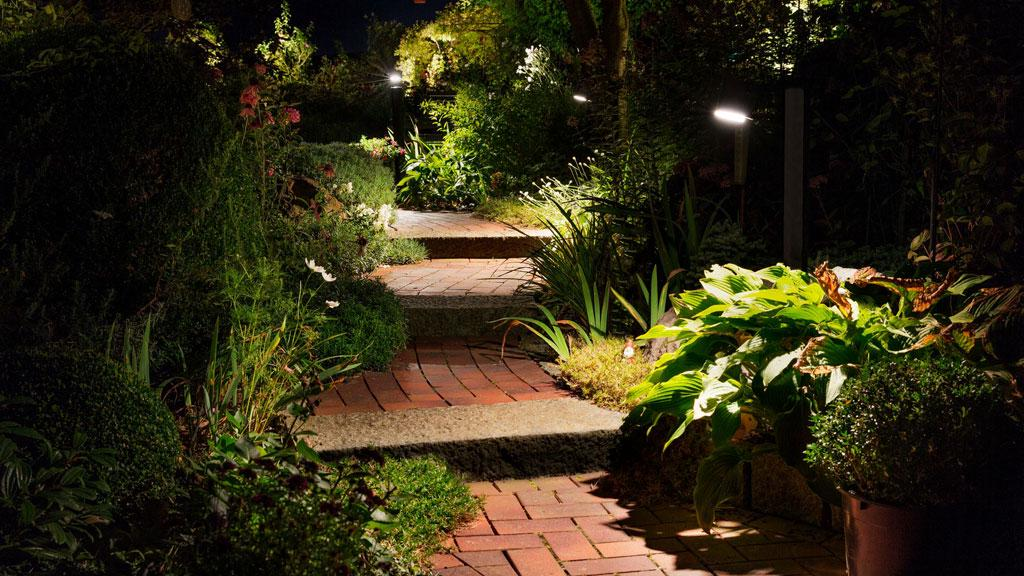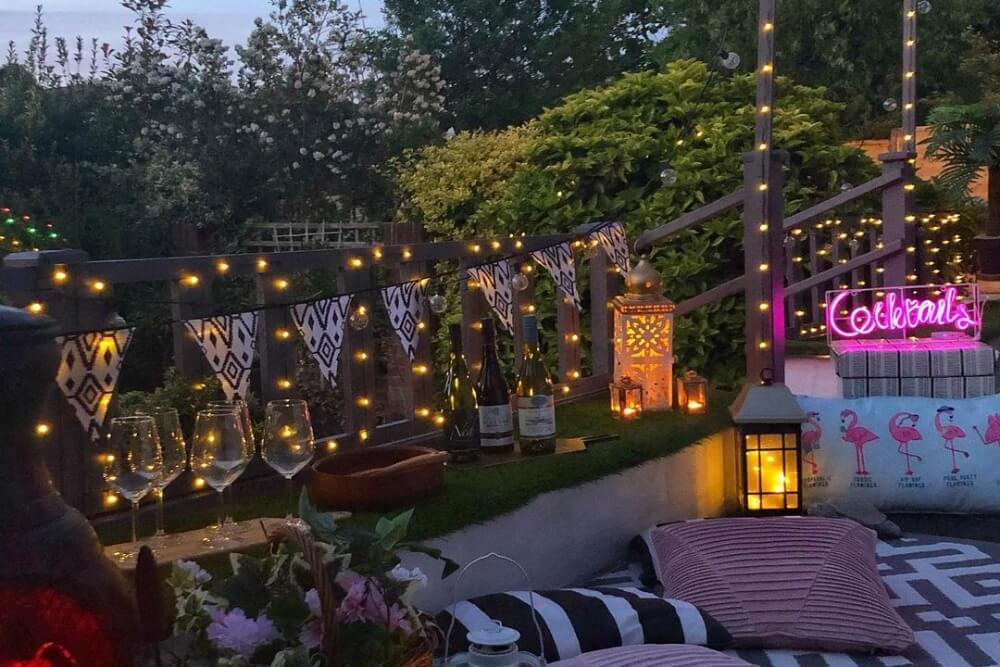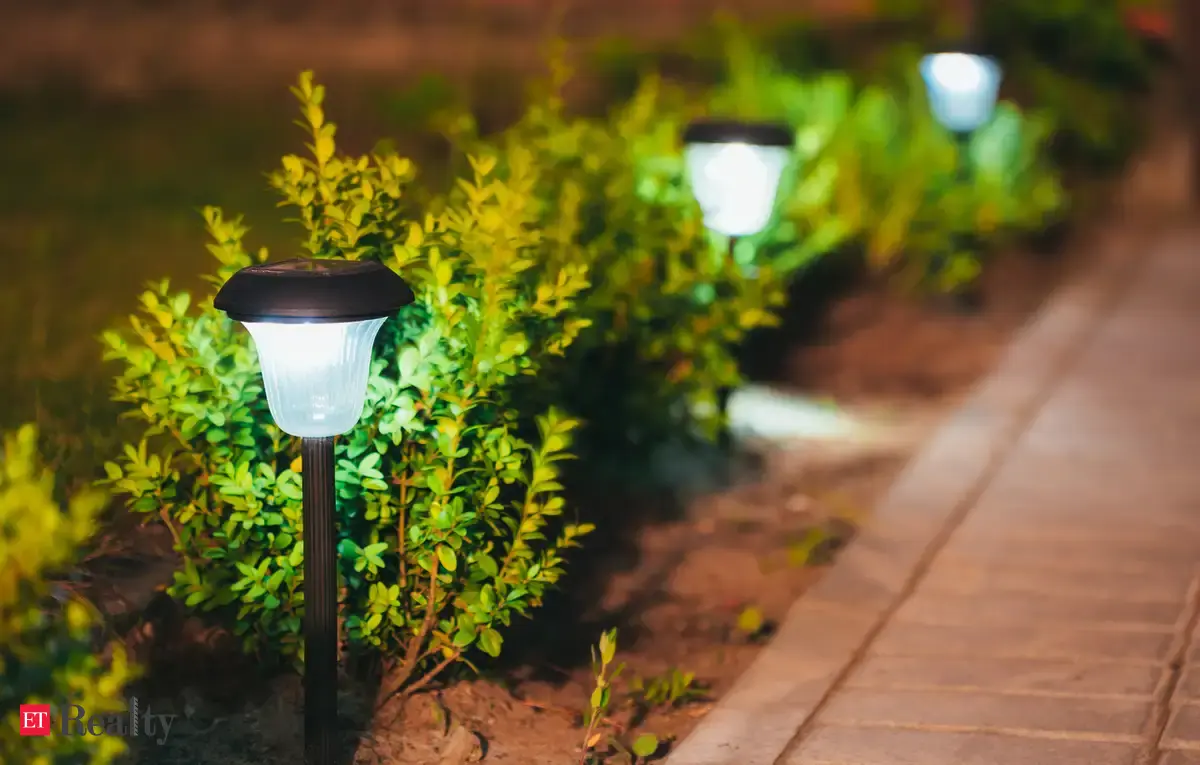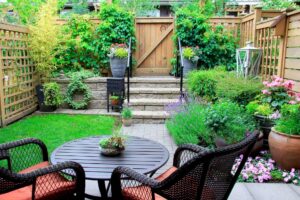Illuminate Your Landscape: Choosing and Using Solar Garden Lights for Year-Round Impact
Solar garden lights have revolutionized landscape lighting, offering eco-friendly illumination that enhances outdoor spaces without increasing energy bills. From practical pathway markers to decorative accent lighting, these versatile fixtures can transform your garden’s nighttime appearance while improving safety and extending your outdoor enjoyment hours. But with countless options flooding the market, how do you select solar lights that will perform reliably through all seasons and truly enhance your landscape design?
Understanding the Solar Advantage: More Than Just Energy Savings
Solar garden lights operate on a brilliantly simple principle: photovoltaic panels capture sunlight during the day, converting it to electrical energy stored in rechargeable batteries that power LEDs after dark. This self-contained system eliminates the need for electrical wiring, making installation remarkably straightforward compared to traditional landscape lighting.
“The technology behind solar lighting has advanced dramatically in the past decade,” explains Maria Delgado, landscape designer and certified solar lighting specialist. “Today’s premium fixtures offer light output that rivals low-voltage systems, with dramatically improved cold-weather performance and battery longevity.”
Beyond the obvious environmental benefits and energy savings, solar lighting offers distinct advantages for garden design:
- Flexibility for experimentation with placement without permanent installation
- Elimination of potentially dangerous electrical connections in wet areas
- Ability to illuminate areas far from power sources
- Simple seasonal adjustments to accommodate changing garden layouts
- Automatic operation without programming timers or controllers
Selecting Solar Lights That Perform Year-Round
Solar Performance Factors: Beyond Brightness Claims
When evaluating solar garden lights, understanding the complete performance picture requires looking beyond simple lumens ratings. The brightest solar lights for outdoors must balance several critical factors:
Solar Panel Efficiency
Illuminate Your Landscape: Choosing and Using Solar Garden Lights for Year-Round Impact
Solar garden lights have revolutionized landscape lighting, offering eco-friendly illumination that enhances outdoor spaces without increasing energy bills. From practical pathway markers to decorative accent lighting, these versatile fixtures can transform your garden’s nighttime appearance while improving safety and extending your outdoor enjoyment hours. But with countless options flooding the market, how do you select solar lights that will perform reliably through all seasons and truly enhance your landscape design?
Understanding the Solar Advantage: More Than Just Energy Savings
Solar garden lights operate on a brilliantly simple principle: photovoltaic panels capture sunlight during the day, converting it to electrical energy stored in rechargeable batteries that power LEDs after dark. This self-contained system eliminates the need for electrical wiring, making installation remarkably straightforward compared to traditional landscape lighting.
“The technology behind solar lighting has advanced dramatically in the past decade,” explains Maria Delgado, landscape designer and certified solar lighting specialist. “Today’s premium fixtures offer light output that rivals low-voltage systems, with dramatically improved cold-weather performance and battery longevity.”
Beyond the obvious environmental benefits and energy savings, solar lighting offers distinct advantages for garden design:
- Flexibility for experimentation with placement without permanent installation
- Elimination of potentially dangerous electrical connections in wet areas
- Ability to illuminate areas far from power sources
- Simple seasonal adjustments to accommodate changing garden layouts
- Automatic operation without programming timers or controllers
Selecting Solar Lights That Perform Year-Round
Solar Performance Factors: Beyond Brightness Claims
When evaluating solar garden lights, understanding the complete performance picture requires looking beyond simple lumens ratings. The brightest solar lights for outdoors must balance several critical factors:
Solar Panel Efficiency
The quality of the solar panel directly impacts performance, particularly in challenging conditions. Monocrystalline panels offer the highest efficiency rates, typically 15-20%, and perform better in lower light conditions compared to polycrystalline panels. This makes monocrystalline panels particularly valuable for garden lighting that needs to function year-round, especially in areas with shorter winter days or partial shade.
Monocrystalline panels also demonstrate superior performance in varying temperatures. While all solar panels work better in cooler conditions than hot ones, monocrystalline panels maintain higher efficiency during winter months due to their better temperature coefficient. This means they experience less output degradation as temperatures fluctuate, making them more reliable for all-season use.
Battery Capacity and Type
Battery technology represents the critical link between daytime charging and nighttime illumination. Most quality solar lights now utilize lithium-ion batteries rather than older NiMH or NiCad alternatives. Lithium-ion batteries hold charges longer, function better in cold weather, and generally offer a longer lifespan of 3-5 years before requiring replacement.
“Battery capacity is measured in milliamp-hours (mAh), and for consistent winter performance, look for ratings of at least 2000mAh for pathway lights and 3000mAh or higher for spotlights or security fixtures,” advises electrical engineer Robert Chen. “Higher capacity batteries store more energy during limited daylight hours and maintain better performance during extended cloudy periods.”
Some premium models now include USB charging ports that allow supplemental charging during extended periods of poor weather, ensuring your garden remains illuminated even during the darkest winter weeks.
LED Quality and Efficiency
The LED component determines both light quality and energy consumption. Modern solar lights use highly efficient LEDs that maximize battery life while delivering consistent illumination. When reviewing specifications, look for:
- Color temperature (measured in Kelvins): Lower numbers (2700-3000K) produce warm, inviting amber light, while higher numbers (5000-6000K) create cooler, brighter white light that may appear harsh in garden settings.
- Light diffusion: Well-designed fixtures distribute light evenly without harsh hotspots or glare.
- Beam angle: Wider angles cover more area with softer light, while narrower beams create focused illumination for highlighting specific features.
Winter-Ready Features to Prioritize
For solar garden lights that truly work in winter conditions, certain design elements make a significant difference in real-world performance:
Adjustable Solar Panels
Fixed-position panels can significantly underperform during winter months when the sun sits lower in the sky. According to solar expert Andrei Marveaux, “During winter, the sun is lower in the sky, and you can easily make massive improvements to the performance of your solar lights by simply adjusting the angle to capture more direct sun.” Models featuring independently adjustable solar panels allow you to optimize charging by tilting the panel between 45° and 60° during winter months, dramatically improving energy collection.
Weather-Resistant Construction
Quality construction becomes particularly important for lights that remain outdoors year-round. Look for:
- High IP (Ingress Protection) ratings: IP65 or higher indicates excellent protection against both dust and water infiltration.
- Tempered glass covers rather than plastic: Glass maintains clarity longer and resists yellowing or clouding from UV exposure.
- Corrosion-resistant materials: Stainless steel, aluminum, or high-quality polymers resist deterioration even in harsh conditions.
- Sealed battery compartments: Prevent moisture intrusion that can damage electronic components.
Intelligent Light Management
Advanced solar lights incorporate sophisticated controllers that optimize battery usage based on available charge and lighting needs:
- Multiple brightness modes that allow choosing between maximum illumination or extended runtime
- Motion-sensing capabilities that increase brightness only when needed
- Dusk-to-dawn sensors with precise calibration to avoid premature activation
- Power-saving modes that automatically adjust output based on stored charge levels
Types of Solar Garden Lights for Different Applications
Different garden zones benefit from specific types of solar lighting. Understanding these specialized designs helps create a comprehensive lighting plan that enhances both aesthetics and functionality.
Path and Walkway Lights

These popular fixtures provide safety illumination along walkways while defining garden boundaries. Effective pathway lights cast light downward to illuminate the walking surface without creating harsh glare at eye level. The best models feature:
- Heights between 14-24 inches to provide adequate path coverage
- Shielded or frosted lenses that diffuse light pleasantly
- Stable bases or ground stakes that resist tipping in wind
- Decorative designs that complement garden aesthetics even during daylight hours
For pathways in regions with winter snow, choose taller models with elevated light sources that remain visible above typical snowfall depths.
Spotlights and Accent Lights

These directional fixtures create dramatic focal points by highlighting garden features such as specimen plants, statuary, or architectural elements. Modern solar spotlights can produce impressive illumination, with the brightest models delivering up to 250 lumens according to tests by BBC Gardeners’ World Magazine. Key features include:
- Adjustable heads for precise aiming
- Focused beam patterns with minimal light spill
- Multiple intensity settings for different effects
- Ground stakes or mounting brackets for versatile positioning
For winter performance, look for spotlights with separate, adjustable solar panels that can be positioned for optimal sun exposure regardless of the fixture’s orientation.
Decorative and Specialty Lights

Beyond functional illumination, solar-powered decorative lights add whimsical charm and artistic elements to garden spaces. These design-forward options include:
- String lights with weatherproof bulbs for trees, pergolas and structures
- Lanterns and hanging fixtures for ambient illumination
- Color-changing models that create dynamic lighting effects
- Novelty designs like illuminated flowers, animals, or seasonal motifs
When selecting decorative lights, balance aesthetic appeal with practical durability. Many budget decorative lights use inferior components that fail after a single season outdoors. Premium models may cost more initially but provide years of reliable performance.
Installation Strategies for Maximum Performance
Strategic placement significantly impacts solar light performance, particularly during winter months with reduced daylight.
Optimal Positioning for Sunlight Exposure
Solar panels need direct sunlight to charge efficiently, making placement the most critical factor in year-round performance:
- South-facing locations (in the Northern Hemisphere) receive the most consistent solar exposure
- Avoid areas shaded by buildings, fences, or evergreen vegetation
- Position fixtures at least partially clear of deciduous tree canopies that block winter sun
- Consider seasonal sun paths when planning permanent installations
- For winter operation, angle panels toward the southern sky at approximately 45-60 degrees
“In winter, you’ll see much better results if your panel is tipped between 45° and 60°,” explains electrician Bobby Lynn. “With the sun sitting lower in the sky during these months, tilting your panels directly towards it can really improve their sunlight capture.”
Maintenance Practices for Longevity
Regular maintenance keeps solar lights performing at their best through all seasons:
- Clean solar panels monthly (more frequently during pollen season or dusty conditions)
- Trim back encroaching vegetation that may create new shade patterns
- Check and tighten all connections before winter to prevent moisture intrusion
- Remove snow promptly from panels during winter months
- Replace batteries every 2-3 years, even in high-quality fixtures
For regions with severe winters, consider removing particularly decorative or delicate fixtures during the harshest months. As noted in Consumer Reports testing, “battery-powered devices fare best when stored around room temperature. This would mean keeping them indoors during cold weather.”
Best Solar Lights for Different Garden Zones
When selecting solar lights for specific garden areas, certain designs excel in particular applications:
Entryway and High-Traffic Areas
Entryways demand both reliable illumination and aesthetic appeal as they create crucial first impressions. For these prominent locations, invest in premium fixtures with:
- Higher lumen outputs (80+ lumens) for adequate visibility
- Motion sensors for enhanced security and convenience
- Durable, weather-resistant construction
- Architectural styling that complements your home’s exterior
Many homeowners find that hybrid solutions work best for entryways, combining solar fixtures for ambient lighting with low-voltage or hardwired fixtures for critical safety illumination.
Garden Beds and Planting Areas
Within planting areas, lighting should enhance the natural beauty of your landscape without competing with it. Effective options include:
- Low-profile path lights with wide light dispersion
- Adjustable spotlights to highlight specimen plants or seasonal displays
- Decorative stake lights that blend with plantings during daytime
- Color-changing fixtures that can create different moods for special occasions
For garden beds, fixtures with ground stakes rather than fixed bases allow for easy repositioning as plants grow or garden designs evolve.
Outdoor Living Spaces
Patios, decks, and seating areas benefit from layered lighting that creates ambiance while providing practical illumination:
- Solar string lights draped overhead for general ambiance
- Solar lanterns or table lamps for portable accent lighting
- Step lights for safety on level changes
- Brighter task lighting near grilling or dining areas
For outdoor living spaces used year-round, consider supplementing solar fixtures with hardwired options to ensure consistent illumination during the darkest winter months.
Consumer Reports and Expert Recommendations
Independent testing provides valuable insights into which solar garden lights deliver on their promises. Consumer Reports tests solar lights for duration, light output, and all-weather performance, with evaluations in both sunny and cloudy conditions.
Their testing has revealed significant performance variations between brands, with the best models maintaining consistent illumination for 8+ hours even after limited daytime charging. For pathway lighting, their top-rated models combine brightness, battery efficiency, and weather resistance with straightforward installation.
BBC Gardeners’ World Magazine awarded their Best Buy distinction to solar lights demonstrating exceptional durability through extensive real-world testing. Their spotlight winner impressed testers with “a whopping 250 lumens” output and “adjustable bulb and solar panel angles,” demonstrating how solar technology has advanced for garden applications.
The Spruce’s extensive testing program evaluated 62 different solar lights over a two-year period, subjecting them to simulated hail storms and recording nighttime performance. Their testing revealed that quality solar lights can maintain consistent performance even as winter approaches, with top performers “coming on every night for six months without fail, even as the winter approached.”
Installation Tips for the DIY Gardener
Installing solar garden lights requires minimal tools but benefits from thoughtful planning:
- Conduct a sun exposure survey: Before purchasing lights, document which areas of your garden receive at least 6 hours of direct sunlight, particularly during winter months.
- Create a lighting plan: Map your garden and mark where functional lighting is needed for safety, where accent lighting will highlight features, and where decorative elements will add interest.
- Test before permanent installation: Position lights temporarily and observe their performance for several nights before finalizing placement.
- Install in stages: Begin with pathway lighting for safety, then add accent and decorative elements once the foundational lighting is established.
- Document your installation: If stakes or bases are removed for winter storage, photograph or mark locations to simplify spring reinstallation.
Seasonal Adjustments for Optimal Performance
Maintaining beautiful garden lighting year-round requires seasonal maintenance and adjustments:
Spring Preparation
As daylight hours increase, spring provides the perfect opportunity to refresh your solar lighting:
- Clean all solar panels thoroughly to remove winter grime
- Check and tighten all fixtures that may have loosened during freeze-thaw cycles
- Test all lights through a complete cycle, replacing any damaged components
- Reposition fixtures affected by winter shifts or emerging spring growth
- Reset timers or controllers to accommodate changing daylight patterns
Summer Maintenance
During peak growing season, prevent vegetation from compromising light performance:
- Trim plants regularly to prevent overgrowth that blocks solar panels
- Clean panels more frequently during pollen season
- Consider repositioning lights to accommodate mature plant sizes
- Adjust light patterns to highlight seasonal garden features
Fall Transitions
As daylight diminishes, prepare your lighting system for the challenges ahead:
- Clean all solar panels thoroughly before decreased sun angles reduce charging efficiency
- Adjust panel angles to compensate for lower sun positions
- Prune back deciduous plants that may block valuable winter sunlight
- Consider relocating some fixtures to maximize winter sun exposure
- Activate power-saving modes where available to extend nighttime illumination
Winter Considerations
During the most challenging season, take proactive steps to maintain illumination:
- Clear snow promptly from solar panels after winter storms
- Consider supplemental USB charging for critical pathway lights during extended cloudy periods
- Expect reduced runtime during the shortest days, particularly in northern regions
- Remove purely decorative fixtures that might be damaged by severe weather
- Apply protective covers to vulnerable decorative elements while maintaining solar panel exposure
The Future of Solar Garden Lighting
The solar lighting industry continues to evolve rapidly, with several emerging trends promising even better performance in coming years:
- Integrated smart home compatibility: Newer solar lights incorporate Bluetooth or WiFi connectivity, allowing coordination with other home automation systems despite their independent power sources.
- Improved energy storage: Advanced battery technologies, including new lithium formulations specifically designed for cold-weather performance, are extending winter reliability.
- Enhanced motion detection: More sophisticated sensors distinguish between human activity and environmental movements like blowing leaves, providing security illumination only when truly needed.
- Biophilic designs: Solar fixtures that mimic natural forms or incorporate living elements like small planters are gaining popularity as gardeners seek lighting that harmonizes with natural environments.
Conclusion: Creating Your Solar-Illuminated Garden
Solar garden lights represent one of the most accessible and impactful improvements you can make to your outdoor space. By selecting quality fixtures with winter-ready features, positioning them strategically, and maintaining them seasonally, you can create enchanting nighttime landscapes that function reliably year-round.
Whether illuminating pathways for safety, highlighting garden features for drama, or creating magical ambiance for outdoor gatherings, today’s solar lighting technology offers solutions for every garden need. The best outdoor solar lights combine practical functionality with aesthetic appeal, transforming your garden into a 24-hour environment that can be enjoyed long after the sun sets.
By investing in quality fixtures with monocrystalline panels, lithium-ion batteries, and weather-resistant construction, you’ll create a lighting system that continues performing beautifully through all seasons—enhancing your garden’s charm, safety, and usability without increasing energy costs or environmental impact.






